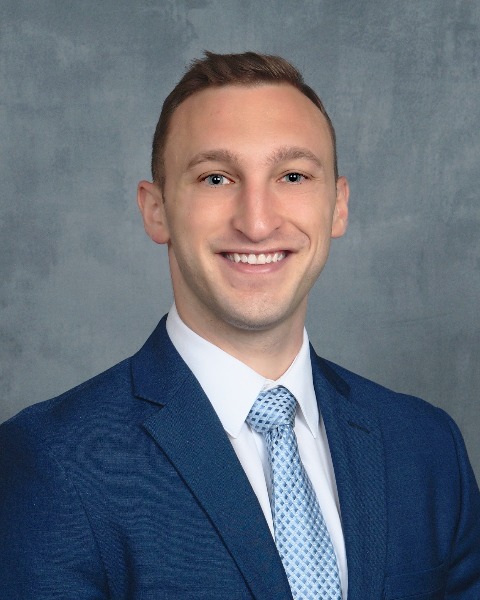Back
Poster Session B - Monday Morning
B0250 - Complete Esophageal Obstruction: A Rare Complication of Zollinger-Ellison Syndrome (ZES)
Monday, October 24, 2022
10:00 AM – 12:00 PM ET
Location: Crown Ballroom

Fadi Chanaa, MD
Atrium Health Wake Forest Baptist Medical Center
Winston-Salem, North Carolina
Presenting Author(s)
Introduction: Patients diagnosed with ZES typically have minimal esophageal morbidity given advancements in anti-secretory medications. This case presents a rarely documented sequala of modern-day patients with ZES.
Case Description/Methods: A 73 year old man with history of HIV on HAART and ZES presented with worsening dysphagia to both solids and liquids. In the 2 year interval since his original presentation, his medical therapy was quickly maximized to omeprazole 180 mg/day and famotidine 80 mg/day. He also underwent tumor resection with distal gastrectomy, resection of D1, roux-en-Y hepaticojejunostomy, and truncal vagotomy. During that time his gastrin levels normalized from 1941 to 87. Despite these measures, he had undergone 21 EGDs and 7 esophageal stents for dysphagia secondary to refractory esophageal strictures. He lost 48 lbs over 2 years despite extensive attempts at both enteral and total parental nutrition.
In January 2022, he presented with inability to swallow his own secretions and profound weakness from malnutrition. An esophagram was performed (figure 1a) revealing complete esophageal obstruction. An EGD with esophageal lumen restoration was attempted using combined retrograde and anterograde recanalization with 2 operators, 2 EGD scopes, and an EUS needle (figure 1c). Unfortunately, the two blind loops appeared to be approximately 6 cm apart in different alignments making lumen restoration unfeasible. The patient was most recently evaluated for esophageal reconstruction by jejunal interposition but was not a candidate due to poor nutritional status.
Discussion: ZES is characterized by severe ulcerative disease due to gastric acid hypersecretion via neuroendocrine tumors. Our case is unique because this patient developed complete esophageal obstruction (CEO) despite management with maximal acid suppressive therapy, surgical resection, multiple EGDs with dilations, and numerous esophageal stents. CEO is a rare occurrence characterized by lumen obliteration leading to the inability to tolerate own secretions and most recorded cases are due to radiation-therapy for treatment of head and neck cancers. Given the low incidence, there is no single established method for endoscopic lumen restoration. However recombined retrograde and anterograde recanalization and dilation (CARD) has been shown to be successful for strictures less than 3 cm.
Case Description/Methods: A 73 year old man with history of HIV on HAART and ZES presented with worsening dysphagia to both solids and liquids. In the 2 year interval since his original presentation, his medical therapy was quickly maximized to omeprazole 180 mg/day and famotidine 80 mg/day. He also underwent tumor resection with distal gastrectomy, resection of D1, roux-en-Y hepaticojejunostomy, and truncal vagotomy. During that time his gastrin levels normalized from 1941 to 87. Despite these measures, he had undergone 21 EGDs and 7 esophageal stents for dysphagia secondary to refractory esophageal strictures. He lost 48 lbs over 2 years despite extensive attempts at both enteral and total parental nutrition.
In January 2022, he presented with inability to swallow his own secretions and profound weakness from malnutrition. An esophagram was performed (figure 1a) revealing complete esophageal obstruction. An EGD with esophageal lumen restoration was attempted using combined retrograde and anterograde recanalization with 2 operators, 2 EGD scopes, and an EUS needle (figure 1c). Unfortunately, the two blind loops appeared to be approximately 6 cm apart in different alignments making lumen restoration unfeasible. The patient was most recently evaluated for esophageal reconstruction by jejunal interposition but was not a candidate due to poor nutritional status.
Discussion: ZES is characterized by severe ulcerative disease due to gastric acid hypersecretion via neuroendocrine tumors. Our case is unique because this patient developed complete esophageal obstruction (CEO) despite management with maximal acid suppressive therapy, surgical resection, multiple EGDs with dilations, and numerous esophageal stents. CEO is a rare occurrence characterized by lumen obliteration leading to the inability to tolerate own secretions and most recorded cases are due to radiation-therapy for treatment of head and neck cancers. Given the low incidence, there is no single established method for endoscopic lumen restoration. However recombined retrograde and anterograde recanalization and dilation (CARD) has been shown to be successful for strictures less than 3 cm.
